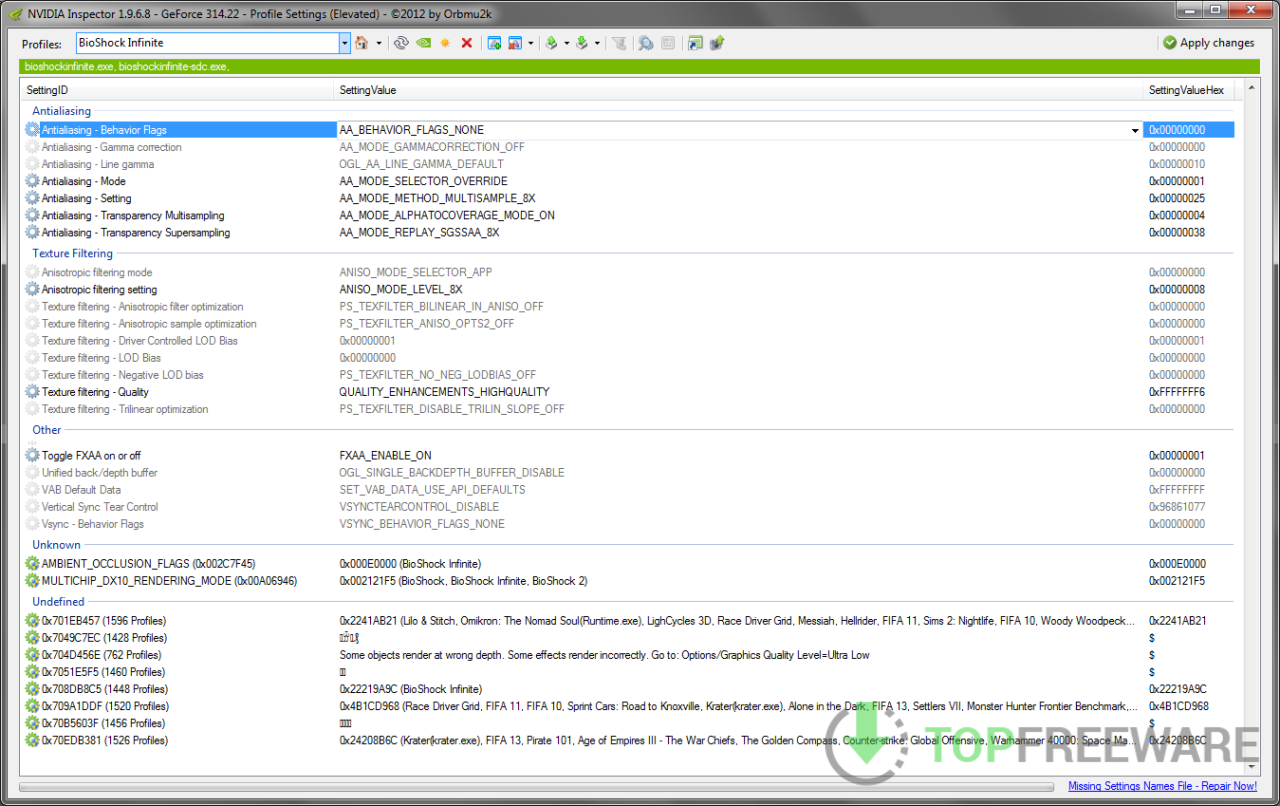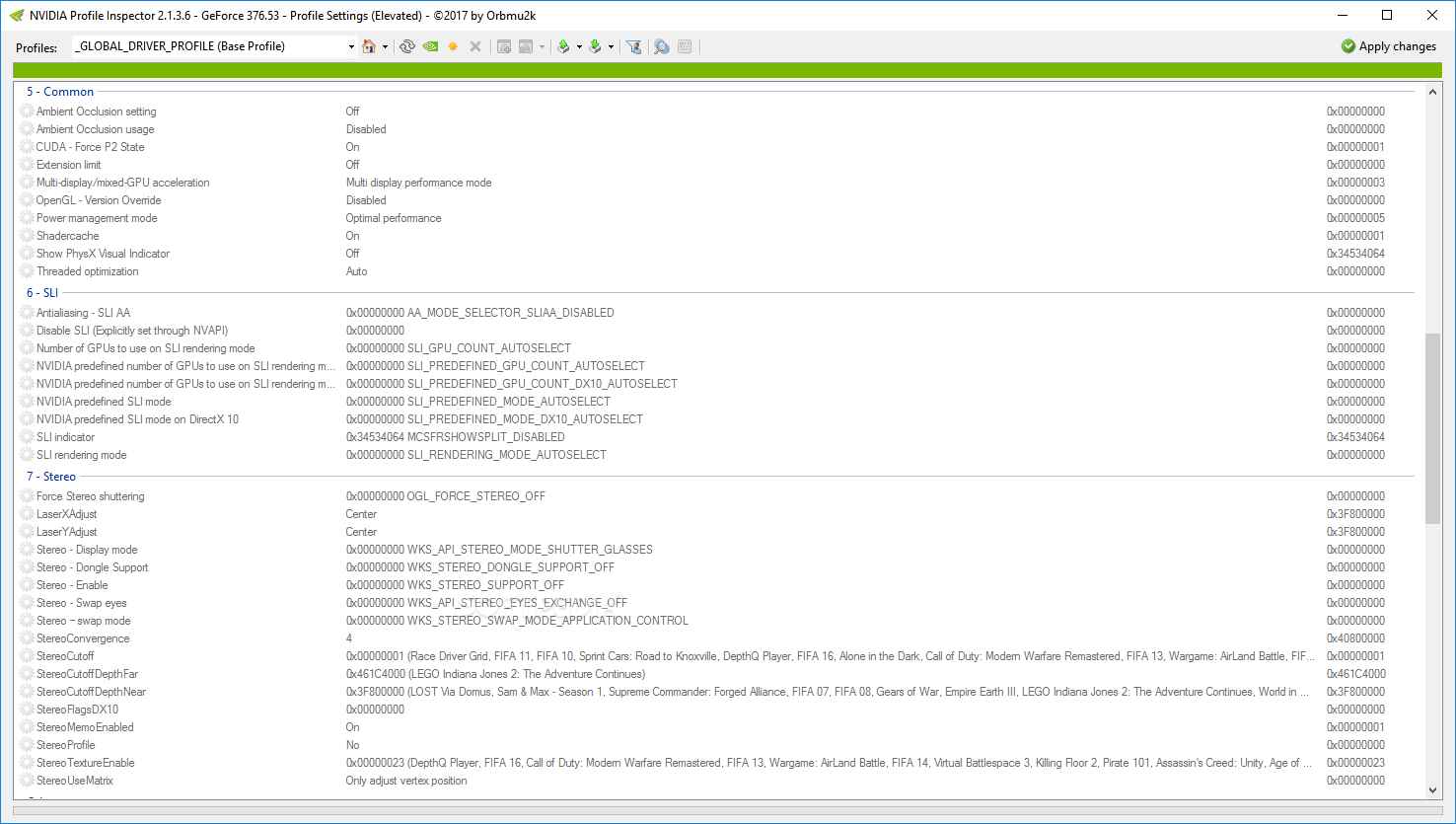.On your Mac, choose Apple menu System Preferences, then click Network.Click the Add button in the list at the left, click the Interface pop-up menu, then choose VPN.Click the VPN Type pop-up menu, then choose what kind of VPN connection you want to set up, depending on the network you are connecting to. Top vpn for mac.
NVIDIA® CUDA Toolkit 11.0 no longer supports development or running applications on macOS. While there are no tools which use macOS as a target environment, NVIDIA is making macOS host versions of these tools that you can launch profiling and debugging sessions on supported target platforms.
- Download Nvidia For Mac
- Nvidia Drivers For Mac Os
- Nvidia Inspector For Mac Os 10.13
- Nvidia Inspector Mac Os X
Download Nvidia For Mac
- Note: Quadro FX for Mac or GeForce for Mac must be installed prior to CUDA Driver 418.105 installation. Double-click on cudadriver418.105macos.dmg; Click Continue on the Installer Welcome screen; Click Continue after you read the License Agreement and then click Agree; Click Install on the Standard Install Screen.
- Nvidia GPUs receive driver updates soon after each version update of OS X. Only one driver is released by Nvidia and it includes support for all of their modern GPUs. You will not find individually named Nvidia drivers for OS X, they are all titled 'Quadro & Geforce Mac OS X Driver Release xxx.xx.xxxxx'. The following list includes links to.
- The particular card I’ve been using is a lovely Asus Strix Nvidia GeForce GTX 980 TI 6 GB model. I picked it up off eBay for $260 back in May of 2017. I picked up 2x 6-to-8 pin PCIe adapters for the card. The card uses 225W under full load, which shouldn’t be a problem for the Mac Pro’s 980W power supply. 75W is being drawn from each PCIe.
- The NVIDIA CUDA Toolkit provides a development environment for creating high performance GPU-accelerated applications. With the CUDA Toolkit, you can develop, optimize and deploy your applications on GPU-accelerated embedded systems, desktop workstations, enterprise data centers, cloud-based platforms and HPC supercomputers.
You may download all these tools here. Note that the Nsight tools provide the ability to download these macOS host versions on their respective product pages.
Coolmuster data recovery for mac. We do not necessarily endorse or evaluate third party content and websites, and we do not assume responsibility for third parties' actions or omissions. We interactive parties do not warrant: (1) that the services, any of the services' functions or any content or software contained therein will be uninterrupted or error-free; (2) that defects will be corrected; (3) that the services or the servers hosting them are free of viruses or other harmful code; or (4) that the services or information available through the services will continue to be available. You should review third parties' terms of use and privacy policies before you use their services.
How to use NVIDIA Inspector. From within the NVIDIA Profile Inspector window, while it may seem unintuitive at first, you can easily change your graphics card’s global settings. These are the settings that will take effect in all your games, for example, unless a certain game has its own profile with different settings.
Please visit each tool's overview page for more information about the tool and its supported target platforms.
The macOS host tools provided are: Asio drivers for mac.
- Nsight Systems - a system profiler and timeline trace tool supporting Pascal and newer GPUs
- Nsight Compute - a CUDA kernel profiler supporting Volta and new GPUs
- Visual Profiler - a CUDA kernel and system profiler and timeline trace tool supporting older GPUs (see installation instructions, below)
- cuda-gdb - a GPU and CPU CUDA application debugger (see installation instructions, below)
Instructions for installing cuda-gdb on the macOS
- This tar archive holds the distribution of the CUDA 11.0 cuda-gdb debugger front-end for macOS.
Native macOS debugging is not supported in this release. Remote debugging from a macOS host to other CUDA enabled targets, however, is supported.

- To install:
- Create an installation directory
- INSTALL_DIR=$HOME/cuda-gdb-darwin-11.0
mkdir $INSTALL_DIR
cd $INSTALL_DIR - Download the cuda-gdb-darwin-11.0.tar.gz tar archive into $INSTALL_DIR above
- Unpack the tar archive
- tar fxvz cuda-gdb-darwin-11.0.tar.gz
- Add the bin directory to your path
- PATH=$INSTALL_DIR/bin:$PATH
- Run cuda-gdb --version to confirm you're picking up the correct binaries
- cuda-gdb --version
- Double click .dmg file to mount it and access it in finder.
- Drag nvvp folder and drop it to any location you want (say <nvvp_mac>).
Directory Structure:- |--nvvp
|--bin/
|--lib64/
|--libnvvp/ - Download and install the required version of JDK.
(Refer to the Notes about JRE Requirements when using Visual Profiler on the macOS section, below) - Open terminal.
- Change to the bin folder
- > cd <nvvp_mac>/nvvp/bin
- Run nvvp script file in command line
- > ./nvvp -vm <path_to_java>
- For example:
> ./nvvp -vm /Library/Java/JavaVirtualMachines/zulu-8.jdk/Contents/Home/jre/bin/java - Remote profiling
- Import nvprof output files
- Download version: 8u144-b01 (Zulu: 8.23.0.3) .dmg.zip.tar.gz
- Download version: Zulu 8.23.0.3 (build 1.8.0_144-b01 .zip
You should see the following output:
- NVIDIA (R) CUDA Debugger
11.0 release
Portions Copyright (C) 2007-2020 NVIDIA Corporation
GNU gdb (GDB) 8.2
Copyright (C) 2018 Free Software Foundation, Inc.
License GPLv3+: GNU GPL version 3 or later
- Native macOS profiling is not supported in this release. Remote profiling from a macOS host to other CUDA enabled targets, however, is supported.
Supported Mac platforms: Mac OS X 10.13
- Steps to install:

- Steps to run:
- Summary of supported features:
Nvidia Inspector For Mac Os 10.13
- Refer the 'Visual Profiler' section in the 'Profiler User's Guide'
for more information:
- https://docs.nvidia.com/cuda/profiler-users-guide/index.html#visual
Nvidia Inspector Mac Os X
Notes about JRE Requirements when using Visual Profiler on the macOS
- OpenJDK provides an open-source (and standards compliant) implementation of a Java compliant JVM.
Binaries are provided by various vendors such as Oracle, Azul Systems (Zulu), Amazon, Red Hat, IBM, etc.
- Visual Profiler needs to use an older version of Java, specifically JRE update 151, to work correctly.
This is currently not offered by Oracle JDK but is provided by Azul Systems (Zulu).
- The Bazel Build project also uses the Zulu builds of OpenJDK.
- Download JDK 8.0.144 to get JRE update 151:
